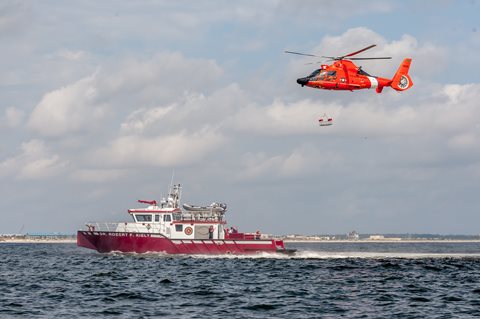Content
 The Jacksonville Fire and Rescue Department has had a Marine Unit since 1922, when the city purchased a converted sub chaser for $100 and modified it for use as the fire boat John B. Callahan. The boat was in service for 41 years before being replaced.
The Jacksonville Fire and Rescue Department has had a Marine Unit since 1922, when the city purchased a converted sub chaser for $100 and modified it for use as the fire boat John B. Callahan. The boat was in service for 41 years before being replaced.
Today, JFRD's Marine Unit operates out of three fire stations: Marine 38 at Station 38 off Trout River Drive, Marine 39 at Station 39 near Metropolitan Park and Marine 40 at Station 40 off Heckscher Drive.
The department operates a variety of boats, including three Metal Craft vessels which are 70-feet, 50-feet, and 36-feet, respectively, along with two Silver Ship 30-feet boats as well as dozens of smaller vessels such as RHIBs, Jon-Boats, and mud-boats.
In addition to fighting fires on water or on shore, the Marine Unit has proven its worth by supplying water to engine companies fighting fires near the St. Johns River. During a fire at Steuart Petroleum, Marine One provided a constant supply of water at 4,000 gallons per minute for four consecutive days.
The Marine Unit is part of the Hazardous Materials Team within the Operations Division.
Marine Unit
 The Jacksonville Fire and Rescue Department has had a Marine Unit since 1922, when the city purchased a converted sub chaser for $100 and modified it for use as the fire boat John B. Callahan. The boat was in service for 41 years before being replaced.
The Jacksonville Fire and Rescue Department has had a Marine Unit since 1922, when the city purchased a converted sub chaser for $100 and modified it for use as the fire boat John B. Callahan. The boat was in service for 41 years before being replaced.Today, JFRD's Marine Unit operates out of three fire stations: Marine 38 at Station 38 off Trout River Drive, Marine 39 at Station 39 near Metropolitan Park and Marine 40 at Station 40 off Heckscher Drive.
The department operates a variety of boats, including three Metal Craft vessels which are 70-feet, 50-feet, and 36-feet, respectively, along with two Silver Ship 30-feet boats as well as dozens of smaller vessels such as RHIBs, Jon-Boats, and mud-boats.
In addition to fighting fires on water or on shore, the Marine Unit has proven its worth by supplying water to engine companies fighting fires near the St. Johns River. During a fire at Steuart Petroleum, Marine One provided a constant supply of water at 4,000 gallons per minute for four consecutive days.
The Marine Unit is part of the Hazardous Materials Team within the Operations Division.